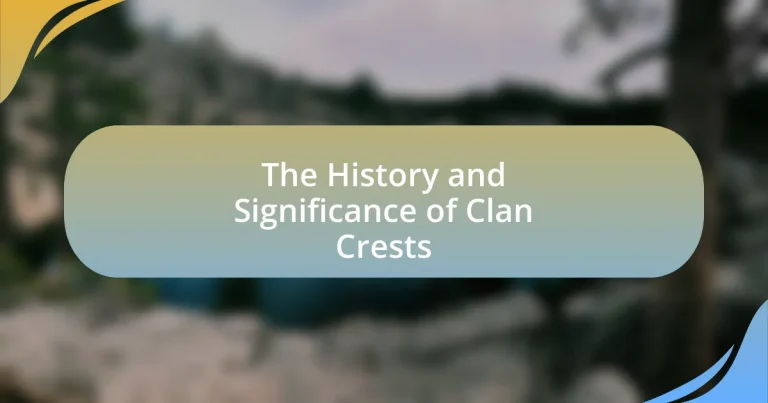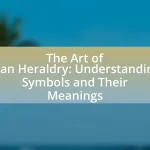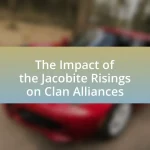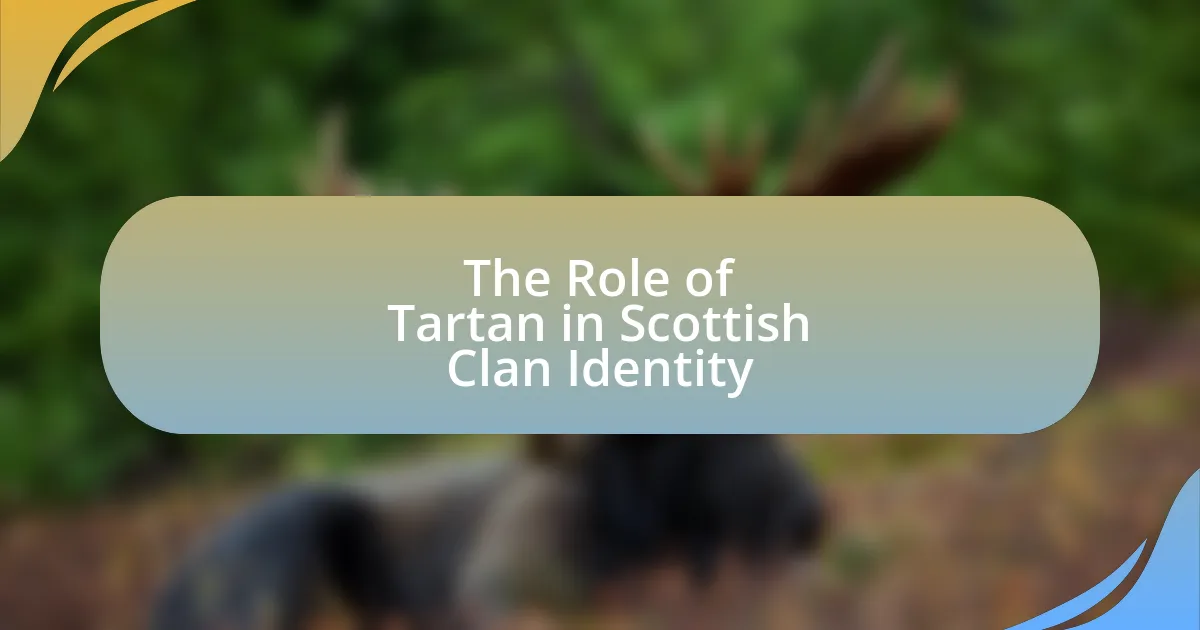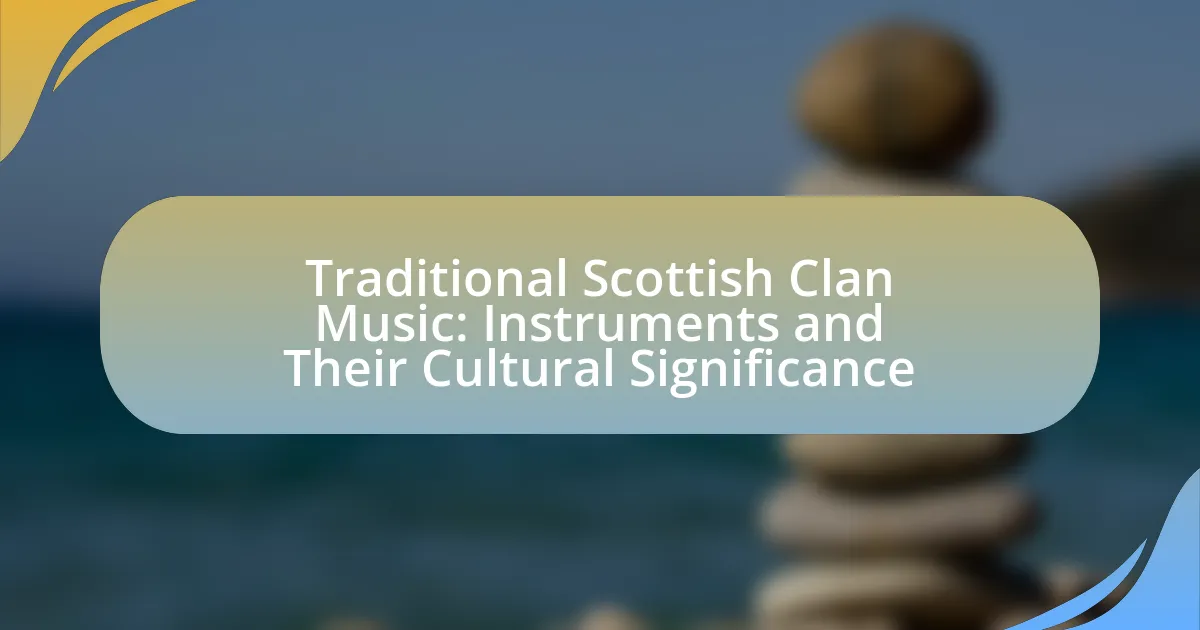Clan crests are unique symbols representing Scottish clans, originating in the late Middle Ages as part of heraldry to signify lineage and allegiance. This article explores the historical development of clan crests, influenced by the feudal system, the Wars of Scottish Independence, and the rise of clan culture. It examines the significance of clan crests in representing family lineage and heritage, their design elements, and their role in modern Scottish identity. Additionally, the article discusses how clan crests are utilized today, their evolution in the digital age, and best practices for honoring and displaying these important cultural symbols.
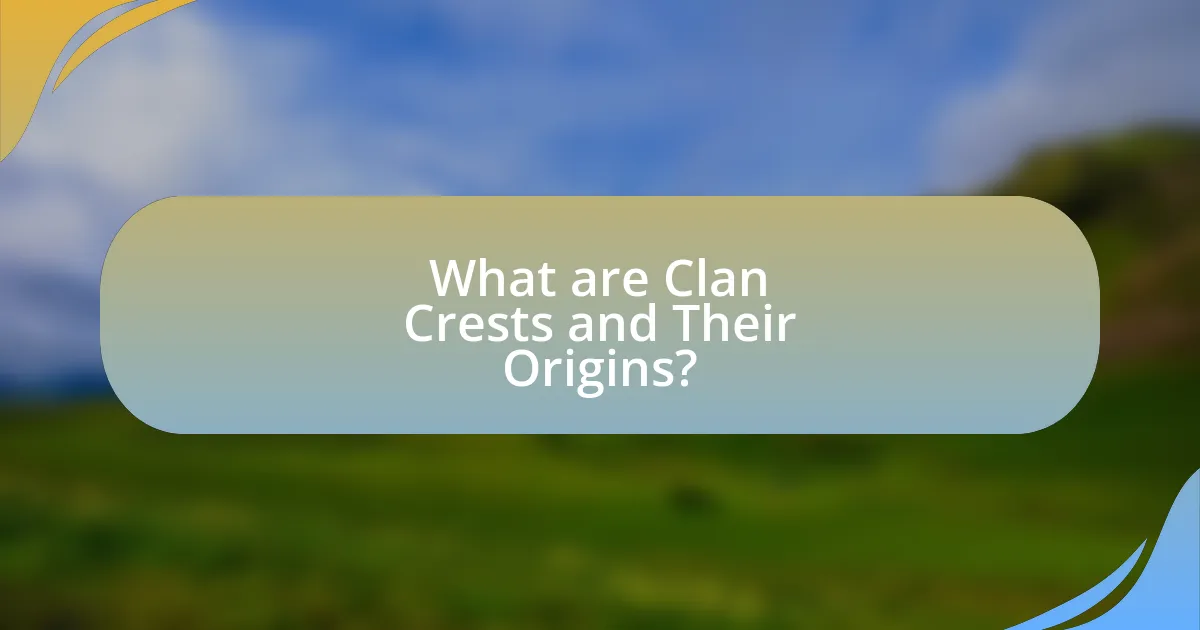
What are Clan Crests and Their Origins?
Clan crests are distinctive symbols associated with Scottish clans, representing the identity and heritage of the clan members. These crests originated in the late Middle Ages as part of heraldry, where they were used to signify lineage and allegiance. Each clan crest typically features a unique emblem, often accompanied by a motto, and is displayed on a shield or banner. The use of clan crests became formalized in the 15th century, with the Lord Lyon King of Arms overseeing their registration and regulation, ensuring that each crest was unique to its clan. This historical context underscores the significance of clan crests as markers of clan identity and pride within Scottish culture.
How did Clan Crests come into existence?
Clan crests originated in the late Middle Ages as symbols of identity for Scottish clans. These crests were often derived from heraldic symbols, which represented the lineage and achievements of a clan’s chief. The use of clan crests became formalized with the introduction of heraldry, where each clan developed unique designs to distinguish themselves from others. Historical records indicate that the practice of using crests became widespread in the 15th century, reflecting the social structure and alliances among clans during that period.
What historical events influenced the creation of Clan Crests?
The creation of Clan Crests was influenced by historical events such as the feudal system in Scotland, the Wars of Scottish Independence, and the rise of clan culture during the Middle Ages. The feudal system established a hierarchy that necessitated symbols of allegiance and identity, leading clans to adopt unique crests to represent their lineage and territory. The Wars of Scottish Independence in the 13th and 14th centuries further solidified clan identities, as clans rallied under their crests for protection and unity against external threats. Additionally, the consolidation of clan culture in the 15th century, marked by the establishment of clan chiefs and the formalization of clan structures, contributed to the proliferation of distinctive crests as a means of asserting clan pride and heritage.
Who were the key figures in the development of Clan Crests?
The key figures in the development of Clan Crests include heraldic artists and Scottish clan chiefs. Heraldic artists, such as Sir James Balfour Paul, played a crucial role in designing and formalizing clan crests during the 19th century, contributing to the standardization of heraldic symbols. Scottish clan chiefs, who were responsible for the representation of their clans, also significantly influenced the creation and adoption of these crests, as they often commissioned designs that reflected their clan’s identity and heritage. The combination of artistic expertise and the authority of clan leaders solidified the importance of clan crests in Scottish culture.
What is the significance of Clan Crests in Scottish culture?
Clan Crests hold significant cultural importance in Scotland as they symbolize the identity and heritage of individual clans. Each crest is unique and often features a heraldic symbol that represents the clan’s history, values, and achievements. Historically, these crests were used to distinguish members of different clans during battles and gatherings, fostering a sense of belonging and loyalty among clan members. The use of Clan Crests is also tied to the Scottish tradition of heraldry, which dates back to the 12th century, further emphasizing their role in representing familial lineage and social status within Scottish society.
How do Clan Crests represent family lineage and heritage?
Clan crests symbolize family lineage and heritage by serving as unique identifiers for specific clans, often incorporating elements that reflect the clan’s history, values, and achievements. Each crest typically features a heraldic symbol, motto, and sometimes a depiction of the clan’s ancestral lands or notable figures, which collectively narrate the story of the clan’s origins and legacy. For instance, the use of specific animals or plants in a crest can signify traits valued by the clan, such as bravery or loyalty, thereby reinforcing the family’s identity and connection to their ancestry. Historical records indicate that clan crests have been used since the medieval period in Scotland, where they were essential for distinguishing between different families during battles and gatherings, further solidifying their role in representing lineage and heritage.
What role do Clan Crests play in modern Scottish identity?
Clan Crests serve as significant symbols of heritage and identity for modern Scots, representing familial ties and cultural pride. These crests are often displayed on various items, such as clothing and accessories, reinforcing a sense of belonging to a specific clan. Historically, Clan Crests were used to identify individuals in battle and signify loyalty to a clan leader, and today they continue to evoke a connection to Scotland’s rich history and traditions. The resurgence of interest in Scottish culture, particularly during events like the Highland Games and clan gatherings, further emphasizes the role of Clan Crests in fostering community and national identity among Scots both at home and abroad.
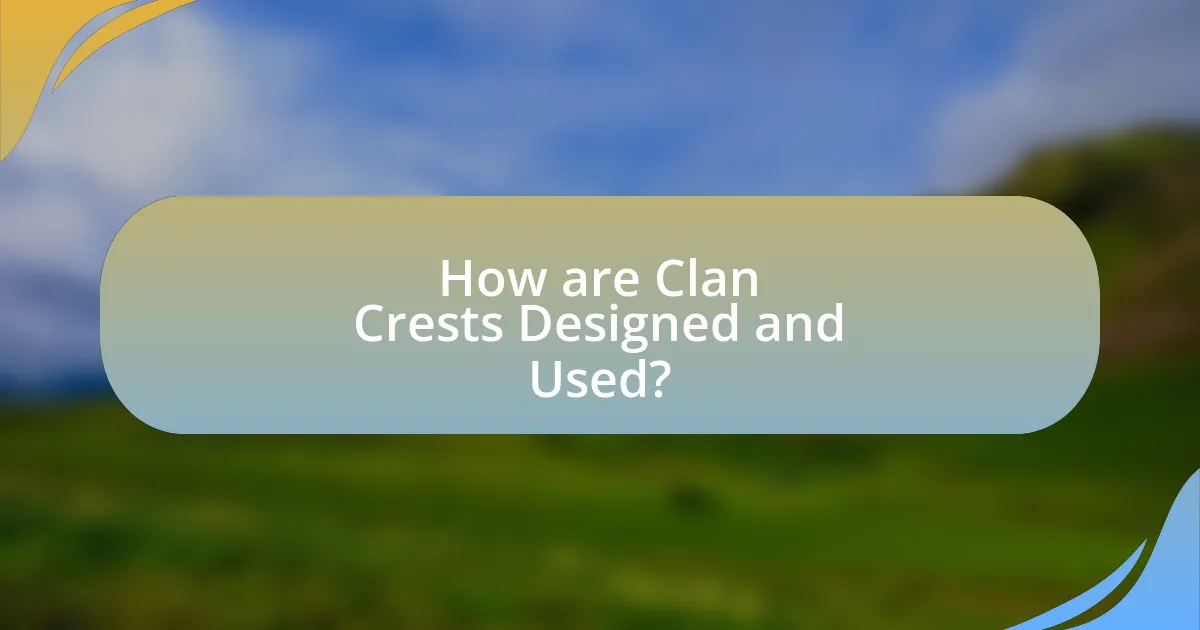
How are Clan Crests Designed and Used?
Clan crests are designed as unique symbols representing specific clans, often incorporating elements like animals, plants, or objects that reflect the clan’s heritage and values. These crests are used primarily in heraldry, appearing on shields, banners, and personal items to signify identity and lineage. Historically, clan crests have been regulated by heraldic authorities, ensuring that each design is distinct and adheres to established rules of heraldry. For example, the Scottish heraldic tradition mandates that clan crests must be accompanied by a motto and a shield, reinforcing the clan’s identity and history.
What elements are commonly found in Clan Crest designs?
Clan Crest designs commonly feature elements such as shields, animals, plants, and mottoes. Shields serve as the central element, often displaying the clan’s heraldic symbols. Animals, such as lions or eagles, represent strength and valor, while plants like thistles or oak leaves symbolize heritage and connection to the land. Additionally, mottoes are included to convey the clan’s values or history. These elements collectively reflect the clan’s identity and lineage, rooted in centuries of tradition and heraldic practices.
What do the symbols and colors in Clan Crests represent?
Clan crests use symbols and colors to convey the identity, values, and heritage of a family or clan. Each symbol typically represents specific traits or historical events associated with the clan, such as animals symbolizing strength or loyalty, while colors often denote qualities like bravery (red), peace (white), or loyalty (blue). For example, a lion may signify courage, and a tree could represent growth and stability. The use of these elements in heraldry dates back to the medieval period, where they served to distinguish clans in battle and signify lineage.
How do Clan Crests differ among various clans?
Clan crests differ among various clans primarily in their design elements, symbols, and colors, which reflect the unique heritage and identity of each clan. For example, Scottish clan crests often feature specific animals, plants, or objects that hold historical significance or represent the clan’s values, such as the stag for Clan Campbell or the thistle for Clan MacLeod. Additionally, the colors used in the crests can signify different attributes; for instance, blue may represent loyalty, while red can symbolize bravery. These variations are rooted in the clans’ distinct histories, geographical locations, and cultural narratives, making each crest a unique emblem of lineage and pride.
How are Clan Crests utilized in contemporary society?
Clan crests are utilized in contemporary society primarily as symbols of heritage and identity, often displayed on family items, clothing, and in various forms of art. Many individuals and families use clan crests to connect with their ancestral roots, showcasing them on items like jewelry, home decor, and personalized gifts. Additionally, clan crests are frequently featured in events such as clan gatherings and cultural festivals, reinforcing community ties and shared history. The resurgence of interest in genealogy and heritage has further popularized the use of clan crests, as people seek to celebrate and honor their lineage.
What are the common uses of Clan Crests today?
Clan crests are commonly used today for personal identification, heritage representation, and decorative purposes. Individuals often display clan crests on family heirlooms, clothing, and accessories to signify their lineage and cultural identity. Additionally, clan crests are frequently featured in official documents, websites, and social media profiles to connect with ancestral roots and foster community among clan members. The use of clan crests in these contexts reinforces the importance of heritage and belonging in contemporary society.
How do Clan Crests appear in family events and celebrations?
Clan Crests prominently feature in family events and celebrations as symbols of heritage and identity. During gatherings such as weddings, reunions, and anniversaries, these crests are often displayed on banners, invitations, and attire, reinforcing familial bonds and cultural pride. Historical records indicate that clan crests have been used since the 15th century in Scotland, serving as identifiers for families and their lineage, thus enhancing their significance during communal celebrations.
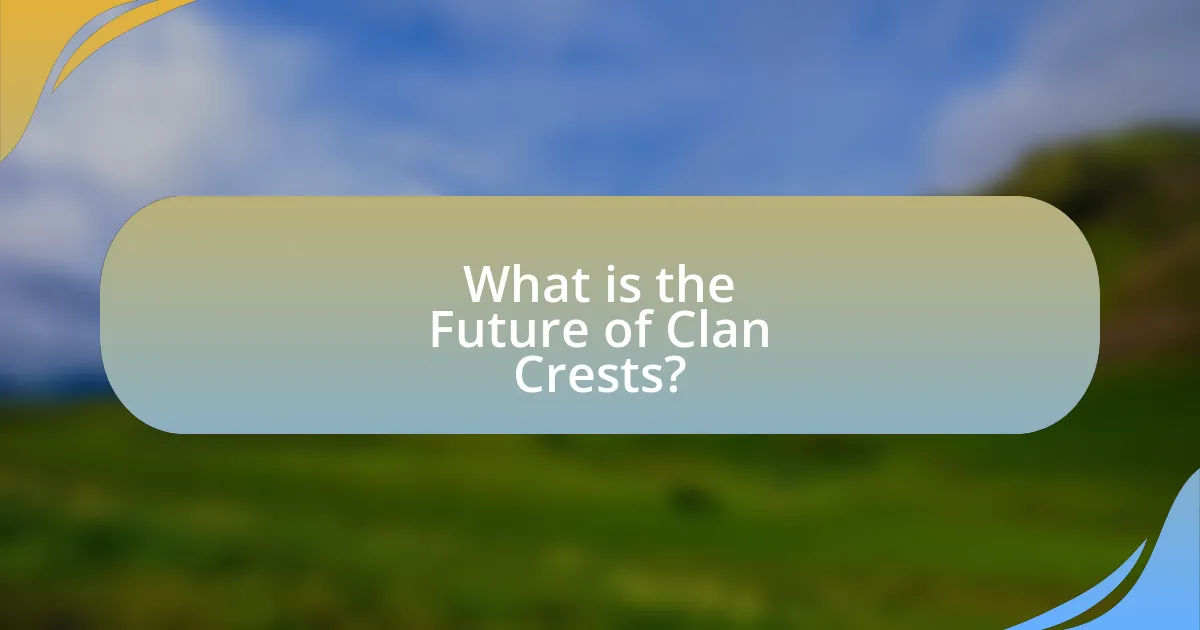
What is the Future of Clan Crests?
The future of clan crests is likely to involve a resurgence in interest as cultural heritage becomes increasingly valued in a globalized society. This trend is supported by the growing popularity of genealogy and family history research, which has seen a significant increase in participation, with platforms like Ancestry.com reporting millions of users seeking to connect with their ancestral roots. Additionally, clan crests may evolve in design and usage, adapting to modern aesthetics while retaining their historical significance, as seen in the rise of personalized merchandise featuring traditional symbols. This evolution reflects a broader societal trend towards embracing identity and heritage, ensuring that clan crests remain relevant in contemporary culture.
How are Clan Crests evolving in the digital age?
Clan crests are evolving in the digital age through the integration of technology and social media, allowing for broader visibility and engagement. Digital platforms enable clans to share their crests more widely, fostering community connections and heritage awareness. For instance, websites and social media channels facilitate the display of clan crests, making them accessible to a global audience, which contrasts with their traditional use primarily in heraldry and physical representations. Additionally, digital tools allow for the customization and creation of modern interpretations of clan crests, reflecting contemporary values while preserving historical significance. This evolution is evidenced by the increasing number of online resources and forums dedicated to clan heritage, where users actively participate in discussions and share digital representations of their crests.
What impact does technology have on the preservation of Clan Crests?
Technology significantly enhances the preservation of Clan Crests by enabling digital archiving and restoration techniques. Digital tools allow for high-resolution imaging, which captures intricate details of crests that may be lost over time. Additionally, software applications facilitate the restoration of damaged crests, ensuring that historical accuracy is maintained. For instance, 3D printing technology can recreate physical representations of Clan Crests, making them accessible for educational purposes and cultural heritage projects. These advancements not only protect the visual integrity of Clan Crests but also promote their study and appreciation in contemporary contexts.
How are younger generations engaging with Clan Crests?
Younger generations are engaging with Clan Crests primarily through digital platforms and personalized merchandise. Many young people are utilizing social media to share their family heritage, showcasing Clan Crests in posts and profiles, which fosters a sense of identity and community. Additionally, the rise of e-commerce has led to increased demand for customized products featuring Clan Crests, such as clothing, home decor, and accessories, allowing individuals to express their lineage in contemporary ways. This trend is supported by the growing interest in genealogy and cultural heritage, with studies indicating that over 70% of millennials value their ancestry and seek to connect with it through tangible symbols like Clan Crests.
What are some best practices for honoring Clan Crests?
To honor Clan Crests, individuals should display them with respect and in accordance with their clan’s traditions. This includes using the crest on personal items such as clothing, jewelry, and home decor, ensuring that the crest is depicted accurately and in a manner that reflects its historical significance. Additionally, participating in clan gatherings and events where the crest is prominently featured reinforces its importance within the community. Historical records indicate that Clan Crests have been used for centuries to signify lineage and heritage, making their proper display a vital aspect of clan identity.
How can individuals respectfully display their Clan Crest?
Individuals can respectfully display their Clan Crest by ensuring it is used in accordance with the traditions and guidelines established by their clan. This includes wearing the crest on clothing, such as kilts or jackets, during clan gatherings or events, and ensuring that it is depicted accurately according to heraldic standards. Additionally, individuals should avoid using the crest in commercial ventures without permission from the clan’s governing body, as this can be seen as disrespectful. The proper display of a Clan Crest honors the heritage and identity it represents, reflecting the values and history of the clan.
What resources are available for learning about Clan Crests?
Books, websites, and historical societies are key resources for learning about Clan Crests. Notable books include “Scottish Clan and Family Encyclopedia” by George Way and “The Scottish Clan System” by John McGibbon, which provide detailed insights into the origins and meanings of various crests. Websites like the Scottish Heraldry Society and the Clan Crest Association offer extensive information, including images and descriptions of crests. Additionally, local historical societies often have archives and experts who can provide context and details about specific clans and their crests, reinforcing the understanding of their significance in Scottish heritage.
